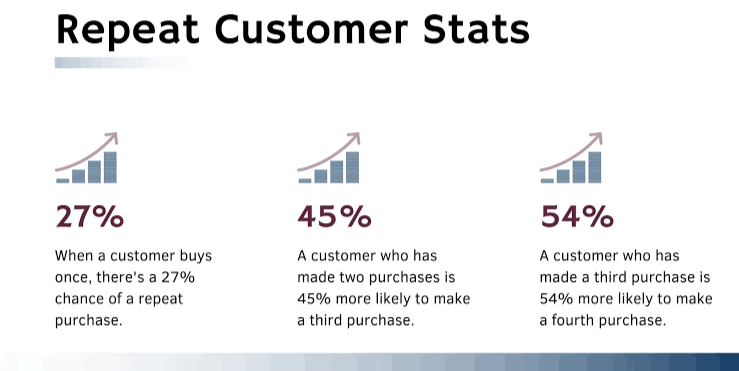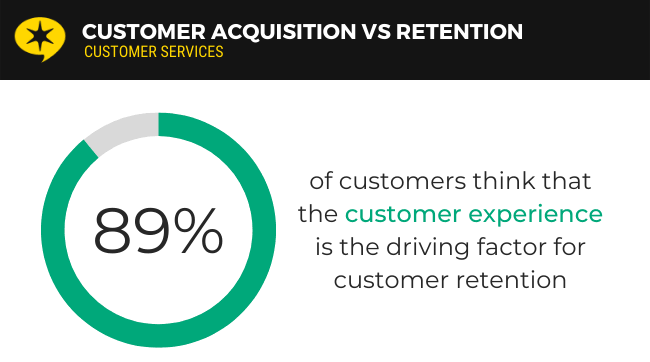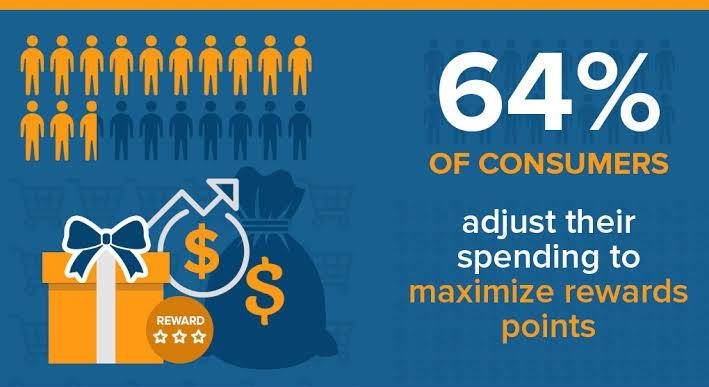Struggling to keep customers around? Learn how to improve customer retention ...

Observing the business environment, one thing that jumps out at you is that businesses devise elaborate plans to gain new customers. While it is commendable for a business to expand, it's also crucial to remember that keeping a customer is 5 to 20 times cheaper than getting a new one. Therefore, you should also try to keep your customers through robust customer retention management and minimizing churn.
This article will examine customer retention management, its best strategies, the role AI can play, and more. Read on.
When discussing customer retention, the most crucial metric is customer retention rate (CRR) - it shows the number of customers a company can retain over a certain period.
The formula to calculate it is:
CRR = [(E-N)/S] x 100
Let's look at an example to understand this formula.
Suppose your company began the new season with 100 customers, added 20 more through various kinds of marketing, and ended the year with 90 customers. Here is how this situation will fit into the formula.
CRR = [(90-20)/100] × 100
CRR = 70%
Smaller businesses usually target the 20% CRR mark, while larger companies, such as those in the insurance and media industry, aim for 79%.
Usually, it's the customer success team that manages customer retention. This team ensures that your customers spend an excellent and delightful time with you, no matter how short or long. They work directly with customers to improve relationships and collaborate with other teams within the organization to ensure that customers actually get what they want.
For instance, customer success should work with sales and customer care to manage and improve customer experiences. This way, the whole machinery works in tandem to improve customer retention rates.
Customer retention refers to nurturing the existing customers, while customer acquisition means trying to gain new ones. Let's understand their similarities and differences below.

Alt Text: Existing customers are more likely to convert than new ones.
As we go further, we'll discover more differences between the two.
Companies release many successful products and provide reliable services, but for whom? Businesses at the forefront of the economy don't just rely on one-time purchases of new customers. Sure, they try to cast their net as wide as possible, but they don't let their core customer base disintegrate at any cost. After all, returning customers spend 67% more than new ones, so retaining them makes perfect sense.
Retaining customers means maintaining high customer service quality and consistently meeting their expectations. Customer retention is the foundation of your market reputation and enhances your brand recognition. The surprising benefit is that when older customers stay with you, there is a higher chance of earning new customers.
Let's explore customer retention management further with robust evidence.
Retaining customers for a long time definitely has a positive impact on your top line. You might not see the benefits of this strategy immediately, which is also because your new customer count will take a slight dip. However, sticking with the retention plan is crucial, and you'll see the results in 12-24 months. This looks like a long time, but considering the average lifespan of a company, it really isn't.
There is enough evidence to support this customer retention management idea. Forbes studied 300 global CEOs, media, and retail executives. One of their findings is worth considering: companies that spent money on increasing retention experienced a 200% higher chance of expanding their market footprint than those that spent money on gaining new customers.
Here's why investing in customer retention enhances long-term revenue prospects:
Let's discuss these three in detail.
The most obvious way in which customer retention revenue is decreasing churn, defined as the loss of customers. Controlling churn is critical and easier since you're more likely to keep the older customers than acquire new ones. That is possible only when you offer quality services and products to customers because it is the main driver of positive customer experience. According to a study by Harvard, boosting customer retention rates (which is, decreasing churn rates) by 5% increases profits by 25-95% overall.

Increasing retention translates to more profits.
The problem is that many startups ignore this hard truth and cannot decrease churn rates as they grow. One major reason is that new businesses are obsessed with rapid growth rather than the company's health.
Another reason to focus on customer retention management is that loyal customers are more likely to spend on your products and services than newer ones. Achieving that level of trust requires excellent customer service.
These statistics show that once customers gain trust, they are more likely to recommend you to others, increasing the number of new customers.
Loyal customers have more lifetime value, so customer retention management is key. Customer lifetime value measures the money customers spend on your products and services as long as they stay with you. Since lower churn means a customer spends more time with you, it automatically leads to more spending, even if the customer doesn't spend heavily.
According to a study by RJMetrics, the top 1% of customers are worth 18x more, and the top 10% are worth 6x of the average. Here is a caveat: customers deliver their 69% value in the first 30 days, which sounds a bit pessimistic, but it actually isn't. If you push a customer to a second purchase within the first 30 days, they are much more likely to increase their purchase frequency.
Once a customer purchases something, their chances of buying the second time are originally 27%. If you push them to purchase once again in the first 30 days, the chance of a third purchase increases by 45%. This shows that you shouldn't sit idly once customers make a purchase: chase them to spend again in the first 30 days, and you'll likely get more money from them.

Repeat customers can build a consistent revenue stream for your business.
Retention can increase revenues, but increased revenues alone don't necessarily translate to more profits. Revenues are what you earn, while profits are the money you keep after covering your operational expenses, debts, wages, and the like.
Here's how customer retention management boosts profits:
Let's explore them in detail below.
Retention improves profitability through a positive effect on the fixed cost base. Many companies focus on gaining new customers, which leads to expansion in the sales and customer care departments.
New labor doesn't come cheap and often becomes the most significant expenditure for startups. Instead, companies should try to minimize churn and focus on customer retention. It helps them avoid hiring more people and saves money.
Here are more things you need to keep in mind:
Customer acquisition costs (CAC) are the costs you bear to convince a customer to buy from you. These include research, marketing, sales costs, and much more. Although CAC varies by sector, one clear takeaway is that acquiring new customers is expensive. Instead of acquiring new customers, you should retain existing ones.
One way it reduces CAC is by reducing the amount you spend to hire new sales staff, as discussed above. Another way it does that is by relying on word of mouth, one of the most powerful and free ways of marketing to new customers. According to Forbes, word of mouth is twice more effective in terms of sales than paid advertising and results in 37% higher customer retention rates.
Another study revealed that loyal customers have spread the positive word about your company, telling nine other people about their experience. On the contrary, dissatisfied customers tell twenty-two others about their unpleasant experiences.
Selling new or additional products to existing customers is much more convenient than selling new ones. One way for businesses to boost profits is by adding new products to their portfolio. However, this doesn't mean you need new customers to buy them. There is a 60-70% probability of upselling to existing customers, while just 5-20% for new customers.
Improving customer retention management requires a multifaceted approach, which varies according to industry, audience, and other factors. Regardless, here are some proven strategies for managing customers that work for all brands and industries.
More and more people have access to smartphones, tablets, laptops, and PCs. For instance, in the United States, around 97% of teenagers have smartphones. Omnichannel marketing means using multiple communication channels to reach out to your customers. Google reports that omnichannel marketing translates into an 80% rise in incremental store visits.
One of the biggest draws of omnichannel marketing is that it puts customers at the center of the action. It is significantly different from multichannel marketing since it combines various channels in a complementary manner. For instance, in omnichannel marketing, you’d send a time-sensitive SMS to push the recipient to open an email.
Customers love live chat for an obvious reason: it is usually the fastest. Quick responses are the heart of quality customer care, whether live chat, email, phone calls, or more. In fact, it is so crucial that 73% of customers would switch to a different brand because of bad customer service.
Today, companies can add live chat functionality to their website and social media handles powered by AI. These chatbots are active 24/7 and can answer almost all customer queries. Adopting this system also means less customer care hiring and increased profits.

Customer experience is a critical factor in customer retention.
Emotions are a big part of brand loyalty: 60% of customers use emotional language when describing their loyalty to a brand. To enhance customer experience, consider the following ideas:
Rewarding customers for their purchases is a crucial client retention strategy. In fact, 81% of customers say they spend more on brands that offer loyalty programs. When you launch a loyalty program, make it easy for customers to join it and offer rewards in ascending order: the more they spend, the more rewards they earn.

Offering rewards makes customers spend more.
However, don't think that a loyalty program alone can guarantee customer loyalty. It is most effective when it is part of a holistic retention plan.
Trustworthiness is a major factor in customer loyalty, and reviews are the most powerful signals. You can send automated email requests to customers for reviews every time they purchase from your store. It gives you a consistent supply of genuine reviews and is an excellent retention strategy.
You can share these reviews on your website, making your loyal customers happy and prospective customers more confident purchasing from you.
Email marketing is an integral part of customer retention management because it saves costs without compromising results. Here is how you can craft an email campaign focused on retention.
Being recognized during customer support interactions makes customers feel special and valued. Customers want you to know about their shopping history, product interests, and other details. To achieve this, your support teams should be provided with all the relevant customer data to deliver personalized information.
It's critical that this user information is only accessed by authorized individuals belonging to the customer care team. If that's the case, customers are open to businesses monitoring and tracking their data to enhance shopping and support experience.
While review emails are great for telling others what your customers think, survey emails paint an accurate picture of how customers feel about your products and services. To make this process more efficient, set up an automated emailing system asking new and old customers about their interactions with you. Your surveys should be short and substantive, asking the most important questions that help you determine how satisfied your customers are.
Sending out these emails shouldn't be ceremonial only. When you receive survey responses, make them count by doubling down on what customers like and improving things they don't approve of.
80% of customers expect brands to engage with them meaningfully on social media. More and more people use various social media platforms today. Businesses ignore these spaces in their customer retention management plans at their own peril.
The best strategy for creating social media engagement is to run campaigns that make your customers and followers feel they're part of a community. This involves sharing customer-generated content, commenting on their content, responding to their comments, and the like. Make sure your replies to comments are personalized and not generic.
Following these customer retention tips will help you increase sales, boost profits, and turn your customers into loyal ones.

Customer service is a decisive factor in retention.
Any discussion on customer retention is incomplete without considering the changes occurring, especially because of AI. Let's understand how AI will transform customer retention and help companies perform better in this area.
AI-powered chatbots and virtual assistants are the future of customer support. In recent years, brands have used AI chatbots 92% more, which shows their increasing appeal. Brands implement these bots on their websites or messaging platforms to handle queries 24/7 without needing a human agent.
Here are some of the best AI chatbot practices to get the best performance out of them:
AI can really level up your email marketing and customer retention management game. It can help you handle a barrage of customer support emails and learn from them gradually. A capable AI system gets smarter by handling more emails and suggests solutions from users who face the same problems.
It can optimize every element of your email marketing campaign, such as timing, personalization, and frequency. For instance, when AI notices that a particular customer is interested in shoes, it can craft emails highlighting exclusive deals in this category.
Customer retention management is the key to making your business profitable and ensuring new customers keep coming. From omnichannel marketing to reducing response times to better social media engagement, there is a lot that you can do to enhance customer retention. One key piece of the puzzle is AI, which can really take your retention game to the next level.
Without a robust AI system, customer retention plans will always fall short. That's where Aidbase comes in. It is a comprehensive AI-powered system with an automated chatbot, knowledge-based ticketing, and email support. Whether you want to assist your customers 24/7 on live chat, handle support emails, or generate custom ticket forms, our system is ready to help you.
So, eliminate customer retention management worries and start using Aidbase for free without any credit card details.
The five factors of customer retention management include the following:
Offering these and some other incentives creates loyal customers that stay with you for a long period.
The 8 C's of customer retention management are:
Resolving low customer retention requires a robust customer retention model. Instead of focusing on customer acquisition, you should work on keeping existing customers by building more robust relationships and offering various incentives.
The retention skills that customer care teams should learn include the following:
What are the 4 pillars of retention?
The four pillars of customer retention management are: